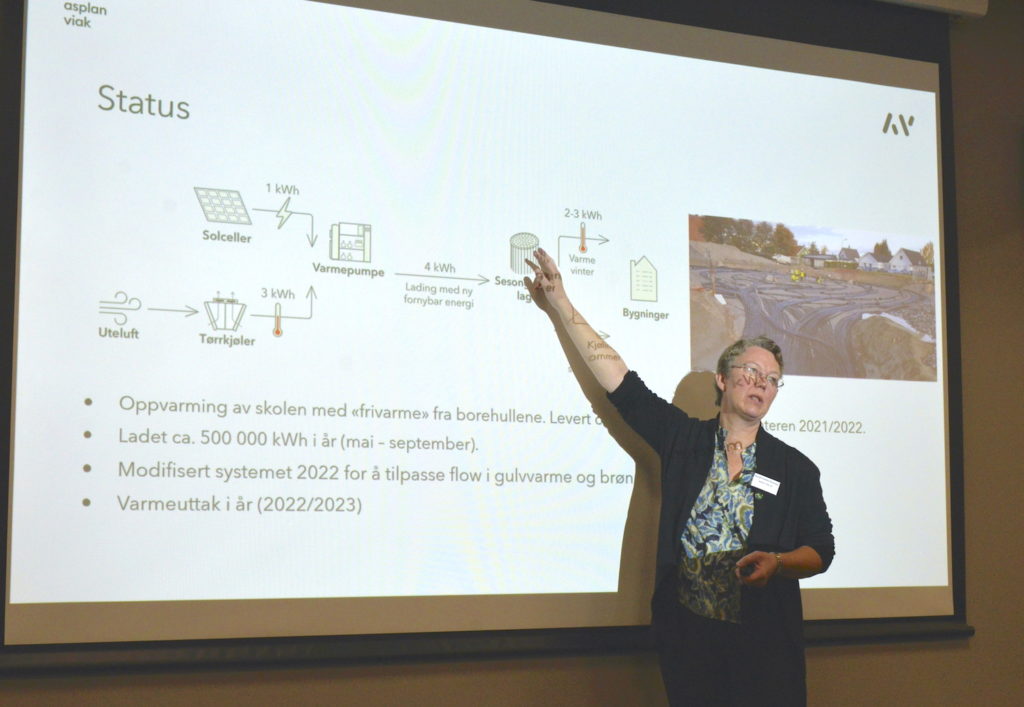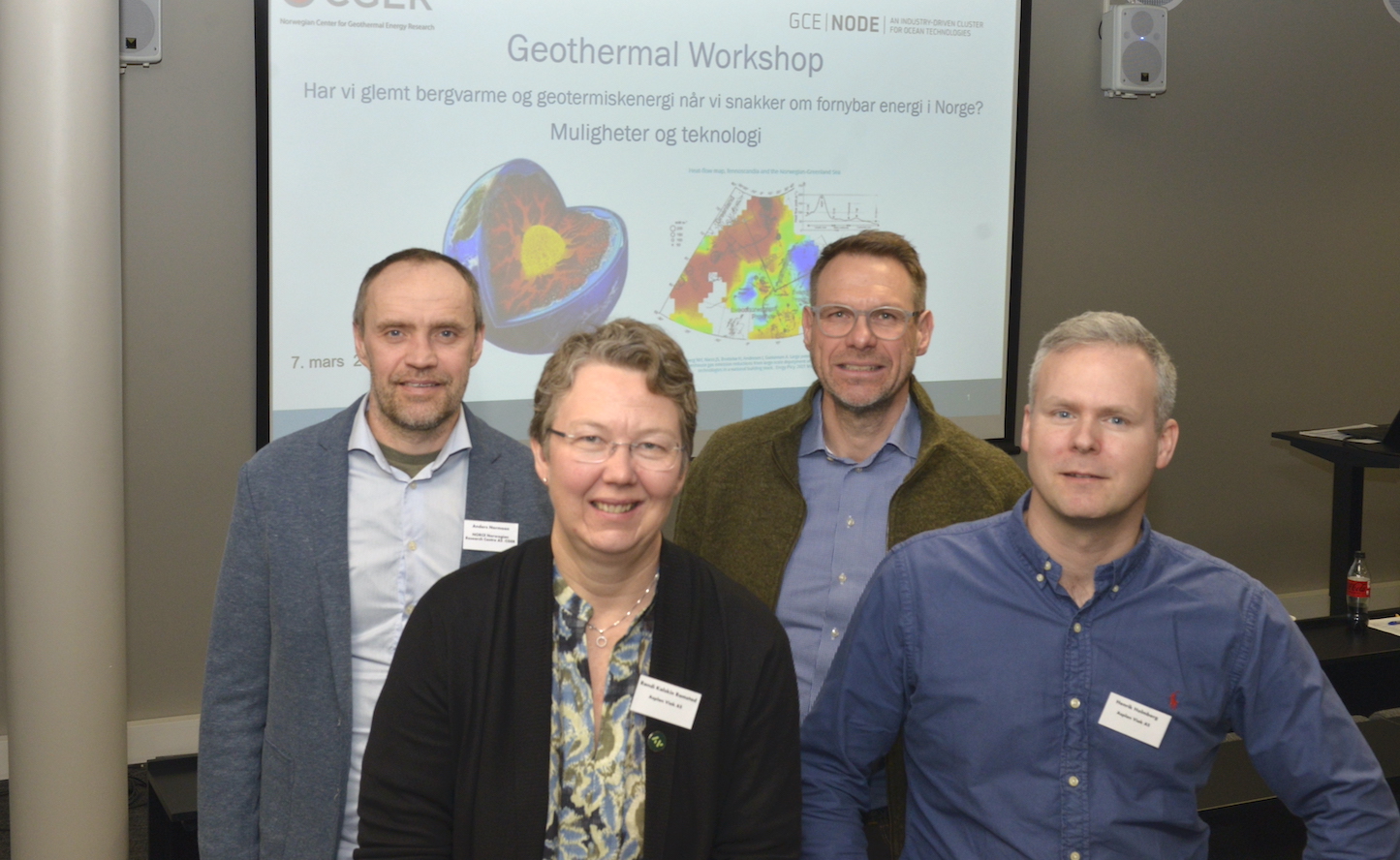The message from a conference hosted by GCE NODE and Norwegian Center for Geothermal Energy (CGER) in Kristiansand was loud and clear: Geothermal energy for heating and cooling is key for the green transition.
Anders Nermoen, Senior Researcher at NORCE and Director at CGER, urges Norwegian decision makers to step up the efforts to exploit the vast emission-free energy resources that lie below our feet.
“With shortage of electric power, we cannot allow near two-thirds of Norway’s power production to be used for heating and cooling. If we utilize geothermal energy, we can use at least 33 TWh of electrical power for other purposes. We have the resources and technology needed to accomplish this,” says Nermoen.
He adds: “As we develop a renewable-based and carbon neutral energy system, the variation in production and demand is not easily synchronized. Geothermal solutions can store heat energy from when it is produced till when it is needed”.
AN EYE-OPENER
The geothermal energy seminar comprised nearly 50 participants from the region’s business community. Christian von der Ohe, RD&I Manager at GCE NODE, says that the purpose is both to expand the common knowledge and give cluster companies an insight into the many opportunities and benefits that geothermal energy represents.
“Geothermal has a big potential for our world-leading offshore drilling equipment suppliers. Their competence and technology is especially valuable when we tap into the deeper geothermal energy,” says von der Ohe.
Geothermal energy does not draw a lot of attention in Norway, mainly due to the abundance of affordable hydropower.
“In the current situation, and with the prospect of energy shortage and even higher prices, politicians and businesses mainly talk about wind and solar energy. Geothermal energy flies below the radar, which is a shame as geothermal has a mature technology and represents conflict free energy,” says von der Ohe.
Today, geothermal energy accounts for only 4 out of 140 TWh annual consumption in Norway. Reports indicate that we will be able to increase geothermal energy to 30-40 TWh a year, freeing up more than 20% of the annual energy consumption in Norway.

PART OF THE SOLUTION
Randi Kalskin Ramstad, Head of Geothermal Heating, and Henrik Holmberg, Senior Advisor Geothermal Heating, both at Asplan Viak, pointed out that there is a fundamental imbalance in the Norwegian power system.
“We must address the elephant in the room – the electric energy used for heating and cooling purposes. The demand for power is growing faster than we are able to develop new capacity, and we are experiencing power shortages and painful price jumps. At the same time, we use large amounts of electricity for heating. We cannot continue like this. We must save energy, and we must develop more geothermal energy for heating,” said Ramstad.
Geothermal energy has many advantages; The plant has longevity, requires little space, and does no harm to nature. The energy is emission-free and available in large quantities. In addition, it is produced and used locally and helps to free up capacity in a power grid that is about to become overloaded during peak hours.
According to Holmberg, Asplan Viak participates in 100 geothermal heating systems annually, mainly for public and private commercial buildings and larger apartment projects. Energy wells typically run from 100 to 300 meters deep.
“By combining many wells in a concentrated area, excess heat from the sun and wind during the summer can be pumped into the ground and recollected for use in the winter. It is like pouring hot water into a thermos,” said Holmberg.
DEEPER AND CHEAPER
Qmatec produces rigs for drilling holes for foundations, ground reinforcement, water wells and geothermal energy wells. Founder and co-owner Kjell Arild Grønås said cost is the main challenge for geothermal wells.
“For geothermal plants, everything must be more efficient and less expensive. Margins are low and drilling eats the majority of investments. To achieve profitability, development costs must be reduced,” said Grønås.
He is convinced that the market for geothermal energy will grow considerably.
“The potential is enormous. To reach EU’s emission targets for 2030, the development of geothermal energy must triple. In terms of development, Sweden is far ahead of us,” said Grønås.
FASTER DRILLING
Ole Jacob Gjertsen at Schlumberger is an expert on drill bits. He promised that drilling will go faster in coming years.
“We have already tripled the offshore drilling speed. This can, to a certain extent, be achieved also for geothermal wells on land if we transfer the technology”, said Gjertsen. This may, in the future, enable profitable heat extraction also from deeper sources.
Thor Erik Musæus, CEO of Geothermal Energy Nordic pointed out that geothermal energy is one of the most accessible and least troublesome sources of renewable energy today.
“Our belief in the future of geothermal energy is rock solid”, Musæus said.

The seminar on geothermal energy drew approximately 50 people.



